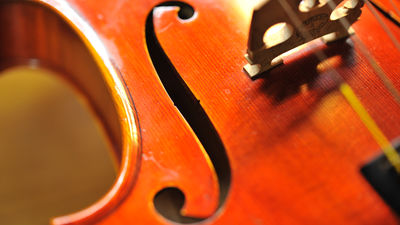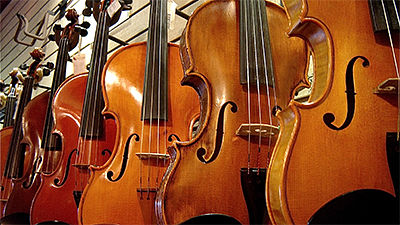What is the chemical substance that produces the tone of the famous violin instrument 'Stradivarius' that costs hundreds of millions of yen?

by
Stradivarius is loved by musicians and collectors as a historical masterpiece of the violin, and can cost as much as hundreds of millions of yen. Scientific analysis of Stradivarius and Guarneri, which was produced around the same time and is known as a famous instrument, revealed some of the key chemical substances that produce unique tones.
Materials Engineering of Violin Soundboards by Stradivari and Guarneri --Su --2021 --Angewandte Chemie International Edition --Wiley Online Library
https://onlinelibrary.wiley.com/doi/10.1002/anie.202105252
The Secret Of The Stradivari Violin Revealed --Texas A & M Today
https://today.tamu.edu/2021/08/12/the-secret-of-the-stradivari-violin-revealed/
Stradivarius and Guarneri are both masterpieces of violins manufactured in Cremona , Italy, from the 17th to 18th centuries. Dr. Joseph Najibary , a professor of biochemistry and biophysics at Texas A & M University , was the first to advocate the theory that 'the chemicals used to make these violins produce the timbres peculiar to famous instruments.' is. Dr. Najibary has been studying this theory for over 40 years, saying, 'All my years of research have shown that the wood of the masterpieces has undergone aggressive chemistry, which gives the wonderful tones of Stradivarius and Guarneri. It is based on the hypothesis that it played a direct role in the creation. '
Newly, international research teams such as the United States and Taiwan, including Dr. Najibary, have announced the results of a scientific analysis of spruce wood used in Stradivarius and Guarneri. The research team used samples taken from the front plate, which acts as a violin vibrating soundboard, for modern spruce wood, spruce wood used for antique musical instruments in the 18th and 19th centuries, and spruce wood used for old buildings. It was compared with a sample collected from maple wood of an antique musical instrument.

by
Analysis revealed that Stradivarius and Guarneri spruce lumbers showed little structural degradation in their cells, while abnormal oxidation patterns not found in other lumbers. Furthermore, examination of evidence of chemical treatment of Stradivarius and Guarneri suggested that borax , zinc , copper , alum, and sodium chloride (salt) were used to treat wood along with lime water. is.
A general violin has a top plate thickness of about 3 mm to 3.5 mm to prevent cracking over time, but the front plate of Stradivarius and Guarneri is thinner than that, only about 2.0 to 2.9 mm. Despite being surprisingly thin by modern standards, the research team found that a series of chemical treatments is durable as to why Stradivarius and Guarneri remain playable for hundreds of years. It is pointed out that it may have increased.
'The existence of all of these chemicals indicates a partnership between the violin maker at the time and local pharmacies and pharmacists,' said Dr. Najibary. They would have wanted to treat the violin to prevent the bugs from eating up the wood. ' The chemical treatment not only protected the wood from insect erosion, but the addition of alum and salt may have stabilized and hardened the wood, and the addition of salt and alkaline treatment may have prevented shrinkage due to drying. ..
Also, the makers of Stradivarius and Guarneri, who initially used their own treatments for insect repellent purposes, may soon find that the treatment of wood has beneficial effects on the strength and acoustic properties of the violin. Hmm. Dr. Najibary argues that the method of processing wood may have been kept secret, as this knowledge provided an advantage over other instrument makers.

by kerinin
Dr. Najibary points out that further research is needed to find out how chemicals and wood produced the Stradivarius and Guarneri tones. He said it was necessary to collect large samples of violins made by other manufacturers during the golden age of violin making in Cremona, as well as Stradivarius and Guarneri, from 1650 to 1750.
Related Posts:







